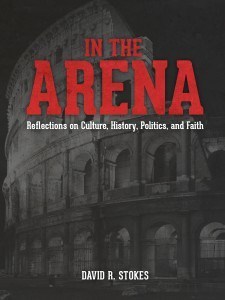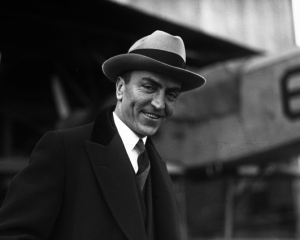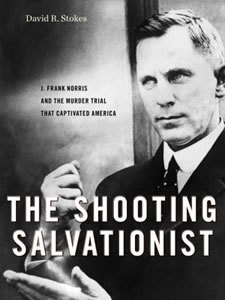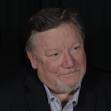David R. Stokes's Blog, page 4
January 23, 2015
Operation Hope Not
When Winston Churchill was winding down his second tenure as British Prime Minster in 1951, he was shaving one cold January morning. While he worked the razor, the image of his private secretary, Jock Colville, came into view in the mirror. Winston put the instrument down for a moment and turned to Colville and remarked: ���Today is the twenty-fourth of January. It is the day my father died. It is the day I shall die, too.���
That is exactly what happened 50 years ago this weekend���January 24, 1965.
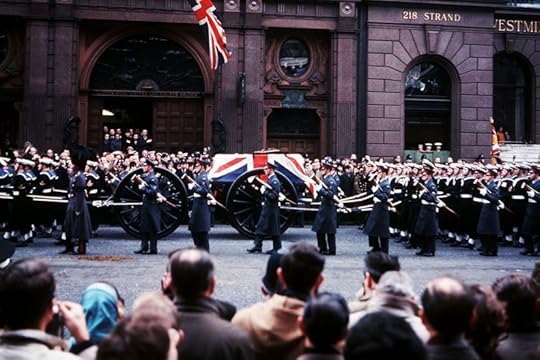 Years earlier, Queen Elizabeth II began the discreet discussion of what should happen in the event of the death of Sir Winston. She gave word to her staff that in the event of Churchill���s death during her absence from England, ���he should be given a public funeral of a scale befitting his position in history.���
Years earlier, Queen Elizabeth II began the discreet discussion of what should happen in the event of the death of Sir Winston. She gave word to her staff that in the event of Churchill���s death during her absence from England, ���he should be given a public funeral of a scale befitting his position in history.���
A full state funeral would require a request from the Queen to House of Commons after Churchill���s death and an affirmative vote, but Elizabeth was clearly indicating early on that such a grand farewell would be her recommendation.
So the wheels were set in motion for Winston���s send off a dozen years before his death. The Queen���s initial directive was soon enhanced and over time it was formalized into a working plan. Over the years, ideas were discussed, mostly out of Churchill���s view, and by the late 1950s a detailed blueprint was in place.
It was called, appropriately, Operation Hope Not.
Fourteen months before Churchill died, America and the world had paid respects to a fallen president���John F. Kennedy. There were no plans in place for such an event because it was unexpected and unimaginable. Sometime on the evening of November 22, 1963, the President���s widow, Jacqueline Kennedy, with her sense of history and ever-present grace, garnered her thoughts and asked for a quick, but thorough, review of the funeral of Abraham Lincoln that took place nearly 100 years earlier. She wanted to use it as a reference for the farewell to her murdered husband.
In somewhat the same way���though with years of preparation���the model for much of what would transpire during the last week of January in 1965, was yet another famous funeral. That one was back in in 1898, when Great Britain said goodbye to William Ewart Gladstone.
That was also first time a funeral became a global media event.
The parallels between Gladstone and Churchill resembled those often drawn between Kennedy and Lincoln, including the way they were laid to final rest. But there was one notable distinction. Queen Victoria detested Mr. Gladstone, who was known around the royal court as, ���the man the Queen most loves to hate.��� Victoria ignored Gladstone in death as much as she despised him in life. She was silent on the matter of a State Funeral for him and only agreed when it was clear that Parliament overwhelming approved. Her son, the Prince of Wales, who would become King Edward VII upon his mother���s passing in January of 1901, was embarrassed by his mother���s behavior, and personally apologized to Gladstone���s widow as she was leaving the service at Westminster Abbey.
Of course, things were completely different when Winston Churchill died. Queen Elizabeth II had great affection for him, and her recommendation for a full State Funeral made its way to the House of Commons on Monday, January 25th, at two-thirty PM. Such an expression was the ultimate sign of respect and honor. It was quickly approved and the House postponed all other business until after Churchill was buried.
He would be the first ���commoner��� to be so honored since Mr. Gladstone.
[I am currently finishing a novel set against the backdrop of “Operation Hope Not.” It’s titled, “THE CHURCHILL FUNERAL PLOT” — coming soon! – DRS]

January 17, 2015
Race, Roe, & Dr. King

This week’s sermon is by the Rev. David R. Stokes, senior pastor of Fair Oaks Church in Fairfax, marking Sanctity of Human Life Sunday on Jan. 18. President Ronald Reagan established a National Sanctity of Human Life Sunday in 1984, to be held the Sunday in January that falls closest to the anniversary of the Roe v. Wade abortion decision handed down by the U.S. Supreme Court.
The recent passing of theologian Richard John Neuhaus brings to mind a passage from the book of Genesis: “There were giants in the earth in those days.”
As Michael Gerson mentioned in his recent tribute to Neuhaus in The Washington Post, there was a time when “the footsteps of theologians shook the land.” These days, he laments that the great thinkers who “provided the intellectual and moral ballast for a rough national crossing through the Cold War and civil rights movement are gone and the nation’s hungry sheep now look up to the likes of Oprah Winfrey and Deepak Chopra for spiritual nourishment.
Neuhaus was, according to Gerson, “first a man of the left, then a man of the right — yet entirely consistent on the things that matter most.” He walked with King for civil rights, and later “found the natural extension of those ideals in the pro-life movement.”
In 1963, Martin Luther King Jr. gave the address for which he is best known. Long remembered as the “I Have a Dream” speech, he said things like, “I have a dream that one day this nation will rise up and live out the true meaning of its creed: ‘We hold these truths to be self-evident: that all men are created equal.’ “
Slightly less than five years later, the Dreamer was assassinated on April 4, 1968. In 1973, the U.S. Supreme Court handed down the Roe v. Wade decision, hastening our societal slide toward a culture far too comfortable and familiar with violence and death. The legacy of Dr. King and the fallout from that 1973 legal bombshell sail very close to each other again.
Some see this as an awkward convergence. But it really isn’t. Back in the ’60s, while black preachers were mobilizing masses in the pursuit of civil rights, conservative evangelicals stayed largely on the sidelines. They weren’t all that interested in changing anything. In fact, it was not uncommon to hear white fundamentalist-evangelical preachers of the day, with voices animated by indignation, decrying the very idea that preachers should be activists in the streets, mocking them to get back to their pulpits where they belonged.
Many, if not most — some notably — would later change their minds. What was the catalyst bringing change to how conservative, white clergymen viewed and lived out their roles? What issue convinced these dogmatic men of the cloth to be willing to scramble out of the pulpit-pocket and into a measure of political involvement after decades of silent separation? Well, the winds of change began to blow in the aftermath of that landmark 1973 decision.
So, here we are again in another January, decades after a killing and a ruling, still marching about Roe v. Wade and honoring Dr. King — but seldom in the same room. The two constituencies, both fierce about the importance of faith, seldom find — much less look for — ways to reach out to the other choir. On Sunday, Jan. 18, some churches highlighted the Sanctity of Human Life issue. Others talked a lot about Dr. King and his dream to honor Martin Luther King Jr. Day, which was celebrated Jan. 20. Usually it was one or the other. Some of us, however, tried to do both, because there ought to be an affinity between the two.
When Martin Luther King talked about a dream he had for his four little children and how he longed for them to grow up in a nation “where they will not be judged by the color of their skin but by the content of their character,” beyond the amen and applause of the crowd around the Lincoln Memorial, far too many Americans ignored what he had to say. Or worse, some mobilized to polarize and oppose.
Those opponents were wrong. No matter how much they went to church, read their Bibles or professed the religion of Jesus, they were wrong. It was wrong for good, God-fearing Americans not to see how important it was, from a faith-based point of view, that this nation truly walk the walk it had long talked about.
And it is wrong for some people of faith today not to see the pro-life cause as very much a civil and human-rights issue.
We should have a dream that welcomes all to the table. And we should have a dream that welcomes all to life itself.
The calendar gives us a near-miss each year as these issues come close to collision. But social justice and embracing life itself as profoundly precious should not be either/or issues. They are very much both/and. And until we find a way to bring them together, it is not likely that anyone can really bring us together.
At this transitional moment in our country’s history, there are great and grave issues before us. Some wrongs have been righted. One great wrong — one that has been a hurtful wound for generations, since even before our nation’s founding — is being righted by an inauguration. Other wrongs are yet to be righted. We should celebrate the victory of wrong over right when it happens. And we should mourn when wrongs left untouched cry out for justice and mercy.
The ultimate way for us to see wrongs righted is for us to look back 2,000 years ago, to a great and grievous wrong inflicted on Christ himself. And it is through that wrong, the great finished work on the cross, that we can know what it is to be made right and whole. When our brokenness is taken to His brokenness, healing happens. And that healing transforms us into agents of light — to work for righteousness in a world of woe.

January 15, 2015
Dr. King, the Preacher
Dr. Martin Luther King Jr. was a great man on so many levels. But he was first a pastor/preacher, erudite and eloquent, persuasive and passionate. He could also be controversial in the pulpit.
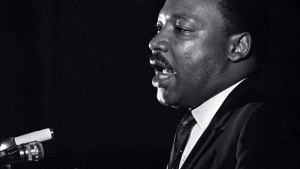 Had he lived, he would be celebrating his 86th birthday today.�� I wonder what he would think about our national journey since the day his powerful voice was so violently silenced?
Had he lived, he would be celebrating his 86th birthday today.�� I wonder what he would think about our national journey since the day his powerful voice was so violently silenced?
A year to the day before his death in Memphis, Dr. King preached Riverside Church in Manhattan. The church, built against the backdrop of the Fundamentalist-Modernist controversy of the 1920s, was founded by Harry Emerson Fosdick and John D. Rockefeller Jr., a liberal preacher with a generous benefactor. Mr. Rockefeller initially donated more than $10.5 million, and his contribution grew to more than $32 million by 1959. It was a case of petro-dollars funding Protestant liberalism.
As Dr. King spoke to a crowd of nearly 4,000 on April 4, 1967, he said that as a religious leader he wanted to ���move beyond the prophesying of smooth patriotism to the high ground of a firm dissent.���
His subject was not Civil Rights ��� it was the Vietnam War.
Though careful to talk about America as his ���beloved nation,��� and not hesitant to address the crowd as ���my fellow Americans,��� he said that ���the greatest purveyor of violence in the world��� was ���my own government.���
At that time, polls indicated that nearly 75% of Americans supported the war.
Dr. King faced his own media firestorm in the immediate aftermath of his ���Beyond Vietnam��� speech. The Washington Post described it as ���unsupported fantasy,��� and the New York Times called it ���Dr. King���s Error.��� U.S. News and World Report went even further, suggesting that King was ���lining up with Hanoi,��� and President Johnson angrily speculated that King had ���thrown in with the Commies.���
Even legendary baseball player/hero Jackie Robinson came out against the speech and the NAACP adopted a resolution warning that King���s effort to connect the anti-war movement with civil rights was a ���serious tactical mistake.���
Later that year, the annual Gallup Poll of the ���Ten Most Popular Americans,��� would not include the name of Dr. Martin Luther King Jr.���for the first time in more than a decade.
One long and very difficult year after his Riverside remarks, Dr. King was in Memphis. The night before his death, he was scheduled to speak at Mason Temple. There were storm and tornado warnings, and he was weary from travel, so he asked Rev. Ralph Abernathy to go in his place. When Abernathy got to the church, he saw thousands who had braved violent weather to hear King, so he called back to the Lorraine Motel and encouraged his friend to come over. King did go over, and he gave what was to be his last sermon.
During his 20-minute extemporaneous address that evening, he asked: ���Who is it that is supposed to articulate the longings and aspirations of the people more than the preacher?��� He then added a word of encouragement to the great number of preachers in the crowd: ���I want to commend the preachers���and I want you to thank them, because so often, preachers aren���t concerned about anything but themselves. And I���m always happy to see a relevant ministry.��� As he warmed to the crowd and his message he said: ���We don���t have to argue with anybody. We don���t have to curse and go around acting bad with our words.���
He called for the development of what he referred to as ���a kind of dangerous unselfishness��� and segued to a rhetorical comfort zone, the biblical story of the Good Samaritan. He used the famous story as the basis for his admonition: ���Let us rise up tonight with a greater readiness. Let us stand with greater determination���we have an opportunity to make America a better nation.���
Then he waxed personal, describing a previous assassination attempt by ���a demented black woman��� ten years before and how the blade came so close to his aorta that one sneeze would have ended his life. This was a familiar King story, one that he told many times with the refrain ���If I had sneezed������ being repeated again and again for effect. At this point, other preachers on the platform that night became unsettled because this story was usually one placed earlier in a speech. The concern was that Dr. King might ���miss his landing��� and not end on a high note.
There is an old formula in the African-American tradition of preaching: ���Start low, go slow. Rise higher, catch fire. Retire.��� The concern was that King was not quite catching fire. Then, however, came those final moments as he talked about being to the mountain top and seeing the ���promised land,��� and the now famous and passionate ending: ���So, I���m happy tonight! I���m not worried about anything! I���m not fearing any man! Mine eyes have seen the glory of the coming of the Lord!���
As a preacher, King was Sunday-centric, always with an eye on the next sermon. So the next afternoon, Thursday, April 4, 1968, he placed a call from room 306 of the Lorraine Motel back to Ebenezer Baptist Church in Atlanta and gave his secretary the title for his upcoming Palm Sunday sermon: ���Why America May Go to Hell.���
He never had the chance to preach that one. A few hours later his voice was silenced in a brief and deadly explosion of violence.
Dr. King is remembered 47 years later for his words and deeds. He is honored���appropriately so���as a hero. It is, though, an interesting question: ���What would Dr. King say today���and how would he be received?���
��[Elements of this article have been excerpted from the author’s book, ‘IN THE ARENA: Reflections on Culture, History, Politics, and Faith’]

January 3, 2015
Man with Fedora Hat in the Ring
Saturday, July 8, 1967 is a date etched in my memory. My father took my two brothers and me to Selfridge Air Base just outside of Detroit to see the famous Thunderbirds Air Demonstration Squadron perform.
But Dad also had another agenda.
Before the aerial show, we sat in the stands listening to a few speakers. Boring stuff, actually. Dad wanted us to see someone. After what seemed to be an eternity waiting for the jets to roar, he said, ���There he is, right down there.��� I looked and saw a group of men walking. They were in military uniforms.
This one older man wore a dark suit and what I later learned was a fedora hat. Dad said that the man always wore a fedora hat.
The occasion for the air show at Selfridge turned out to be the 50th anniversary of what was called ���The Hat in the Ring Squadron,��� a band of pioneer American aerial warriors who complicated things for the Kaiser in The Great War.
And their leader was that man in the fedora hat-Eddie Rickenbacker.
This story came to my mind recently with the release of the powerful film, ���UNBROKEN,��� based on the story of Louis Zamperini, who died last Summer at the age of 97. In the film, Rickenbacker���s name is referenced a couple of times.
He was a race car driver before World War I and made a lot of money at it. When America mobilized to go ���over there,��� Rickenbacker pitched the idea of training drivers like him to fly airplanes in combat, but was rebuffed. So he just drove bigwigs around.
Then one day he had the chance to chauffer an officer named Billy Mitchell, and Rickenbacker���s idea found fertile soil.
Eddie was America���s top ace, shooting down 26 enemy aircraft during this nation���s comparatively brief participation in the European war. He then went into business and became one of the country���s top boosters of commercial aviation.
A few months before Pearl Harbor, he was in a fiery airline crash. He broke several bones and nearly died. But by late 1942, he had sufficiently healed so that President Roosevelt recruited him to carry a secret message to Douglas MacArthur, who by then was in Australia beginning to scrounge and plan for an eventual return to the Philippines.
The message from FDR was verbal. No record of it exists, which indicates its important and the confidence the President had in Rickenbacker.
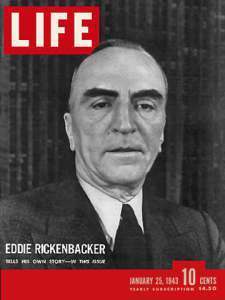 But en route to Australia, his plane went off course and they had to ditch in the South Pacific. He and a few others were adrift for 24 days.
But en route to Australia, his plane went off course and they had to ditch in the South Pacific. He and a few others were adrift for 24 days.
He was wearing a suit and that fedora hat.
They ran out of food on the third day.
A natural leader of men, Rickenbacker made sure he and the men prayed and had scripture reading each day. On the eighth day, one of the men read from the Gospel of Matthew about how the Lord watches over the lilies of the field and the birds in the air. Following the reading that day, Eddie pulled his fedora down over his face to catch a nap.
About twenty minutes later, he was awakened by something on his head. He looked at the men and saw that they were looking at what was on his head. Rickenbacker slowly reached up with his hand and grabbed a big bird, which became Thanksgiving, Christmas, and Easter rolled up into one.
They then used the ���insides��� of the heaven-sent bird as bait to catch fish for days to come, ensuring that they would have sufficient nourishment for the duration.
The man in the fedora hat was convinced ever after than an angel had sent that bird. – DRS

January 2, 2015
Kennedy & Nixon: Their Forgotten FIRST Debate in 1947
CAPITOL LIMITED IS fiction, but it’s based on a true story. Long before they ran against each other for the presidency in 1960–a campaign famous for debates–John F. Kennedy and Richard Nixon faced off in a small town in Pennsylvania’s steel country. The two freshmen congressmen journeyed to McKeesport, PA, in April 1947, to debate the merits of the brand new Taft-Hartley labor law. But their minds were clearly on bigger things.
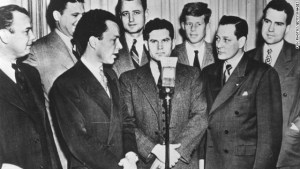 As fate would have it, Kennedy and Nixon found themselves sharing a Pullman compartment on a famous train called The Capitol Limited, the pride of the B&O line, for an overnight trip back to Washington. They stayed awake all night talking about their lives, hopes, and visions for a better world. In CAPITOL LIMITED, bestselling author David R. Stokes imagines how the conversation might have progressed on that long-ago night. Based on extensive research, and complete with a lengthy and unusual-for-a-novel bibliography, CAPITOL LIMITED is your chance to eavesdrop as two men who would one day sit in the Oval Office have an animated conversation about history, world leaders, and the brewing geopolitical issues they would one day face as leaders of the free world.
As fate would have it, Kennedy and Nixon found themselves sharing a Pullman compartment on a famous train called The Capitol Limited, the pride of the B&O line, for an overnight trip back to Washington. They stayed awake all night talking about their lives, hopes, and visions for a better world. In CAPITOL LIMITED, bestselling author David R. Stokes imagines how the conversation might have progressed on that long-ago night. Based on extensive research, and complete with a lengthy and unusual-for-a-novel bibliography, CAPITOL LIMITED is your chance to eavesdrop as two men who would one day sit in the Oval Office have an animated conversation about history, world leaders, and the brewing geopolitical issues they would one day face as leaders of the free world.
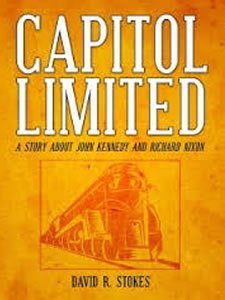 It was the dawn of the Cold War, and these two former Naval officers were developing a vision for the world, one that would be “tempered by a hard and bitter peace.” Bernard Baruch had just days before introduced the term “Cold War” into the vocabulary. And years later, the political torch would be passed to John Kennedy and Richard Nixon, who represented “a new generation of Americans.” They would become America’s premier cold warriors.
It was the dawn of the Cold War, and these two former Naval officers were developing a vision for the world, one that would be “tempered by a hard and bitter peace.” Bernard Baruch had just days before introduced the term “Cold War” into the vocabulary. And years later, the political torch would be passed to John Kennedy and Richard Nixon, who represented “a new generation of Americans.” They would become America’s premier cold warriors.

December 29, 2014
Murder in the Mega-Church?
[Foreword By BOB SCHIEFFER of CBS NEWS]
A National True Crime Wall Street Journal Bestseller
“This excellent book chronicles [a] court case that captivated the nation����– even if it’s barely remembered today����– and makes its central player, Norris, as compelling and multilayered as any character from fiction. . . . The book is engagingly written, in an immediate, you-are-there style, and the story is as compelling and surprising as any Grisham thriller. Top of the line.” –��Booklist (starred review)
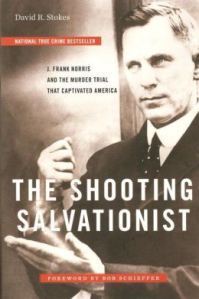 “At a moment ripe for a new kind of media-savvy preacher, in a place where parsons wielded guns as confidently as they toted their Bibles, radio minister and mega-church pastor J. Frank Norris emerged as the archetype of his day. In his riveting tale of Norris���s 1927 trial for murder, David Stokes explains just how it is that this ���Texas Tornado��� became such a star���and lightening rod for controversy. Through rich and compelling narrative, a sharp eye for the quirky as well as the profound, rigorous research, and a commanding sense of the big picture, Stokes offers his reader a rare, exhilarating look at this notorious individual. In the process, he opens up fresh ways of understanding the local culture that vaulted Norris and his Texas-style fundamentalism onto a national stage.”�� – Darren Dochuk, author of From Bible Belt to Sunbelt: Plain-folk Religion, Grassroots Politics, and the Rise of Evangelical Conservatism
“At a moment ripe for a new kind of media-savvy preacher, in a place where parsons wielded guns as confidently as they toted their Bibles, radio minister and mega-church pastor J. Frank Norris emerged as the archetype of his day. In his riveting tale of Norris���s 1927 trial for murder, David Stokes explains just how it is that this ���Texas Tornado��� became such a star���and lightening rod for controversy. Through rich and compelling narrative, a sharp eye for the quirky as well as the profound, rigorous research, and a commanding sense of the big picture, Stokes offers his reader a rare, exhilarating look at this notorious individual. In the process, he opens up fresh ways of understanding the local culture that vaulted Norris and his Texas-style fundamentalism onto a national stage.”�� – Darren Dochuk, author of From Bible Belt to Sunbelt: Plain-folk Religion, Grassroots Politics, and the Rise of Evangelical Conservatism
���Readers will enjoy this oversize tale���a snapshot of a fascinating time in American and Texas history���that reads like fiction. It will appeal to those interested in true crime, the history of fundamentalism, and the early days of Texas��� ��� Library Journal
J. Frank Norris was the pastor of a ���mega-church��� before the name itself existed. He was famous, and to many he was a righteous and inspiring hero.�� By others, however, he was thoroughly hated. His endless crusades frustrated both businessman and politicians in Fort Worth, TX.�� Norris was also a publicity hound who was brash and abrasive.�� His enemies knew that he was a formidable foe.�� On July 17, 1926, Norris shot and killed an unarmed man in the church office.�� David Stokes’s The Shooting Salvationist offers the complete story of�� the shooting, the criminal trial, and their aftermath�� Eighty-five years ago, this event captured the attention of the entire nation.�� Modern readers will likewise be enthralled by David Stokes’s skillful presentation of this shocking crime.�� The story is simply incredible, yet every word is true. ��And you won’t put this book down until reach the end!�� — Chris Rose, Andover Bookstore
���For all the colorful characters who became part of Fort Worth���s history, surely none surpassed J. Frank Norris, the fiery fundamentalist preacher at Fort Worth���s First Baptist Church in pure outlandishness. His oratory and penchant for publicity brought thousands into his congregation and at one point, First Baptist was among the largest churches in the world, a mega church before the phrase was coined. Unfortunately, for all his oratorical skills, Norris��� horizons were limited by several criminal indictments brought on by his tendency for violence.
In this book David Stokes tells the J. Frank Norris story. If I hadn���t grown up in Fort Worth, I would have thought someone made all this up but no one did. It really happened.��� – From the foreword by Bob Schieffer (CBS News)
���Everyone loves a good story, and David Stokes has unearthed one from history���s archives and served it up with style and verve.��� ��– David Pietruzsa, author of 1920: The Year of Six Presidents

Coming in 2015
David has several projects slated for publication in 2015, including:
“THE CHURCHILL FUNERAL PLOT”
‘FATE: The Story of Jake & Clara”
“WHEN THE GOOD SAMARITAN GETS MUGGED”
“JAMES”
“THE SIMPLE LIFE”
Sign up for updates.

December 27, 2014
Nice List Blank Space Christmas Parody :)
Our Christmas Parody now has more than 12,000 viewers on Youtube. I make a “cameo” appearance at the end :) The kids are two of my grandsons and it was filmed at our house. — DRS

Huffington Post & Camelot’s Cousin
[Article by Savas Abadsidis appeared in the Huffington Post]
Camelot’s Cousin is an espionage thriller set against the backdrop of the Cuban Missile Crisis and other famous events during the Kennedy administration. The discovery of a long-buried journal indicates that one of President Kennedy’s most trusted friends was actually a Soviet mole. Templeton Davis, a scholar and media personality becomes lost in an investigation and travels far and wide in his quest to unravel one of the 20th century’s greatest mysteries. David Stokes, an author, ordained minister, broadcaster, and columnist penned the novel and the screenplay to the forthcoming movie. I spoke to Stokes about the project.
The US has always been captivated by the Kennedys. Why do you think this is the case?
I certainly think the way JFK died, how young he was, plays into it. And his younger brother’s death less than five years later solidified their place in our memories and hearts. But long before those images were imprinted on our collective consciousness, there was a carefully cultivated effort to build what we might call today a “brand.” This began with and was largely funded by the money of their father, Joseph P. Kennedy. When the elder Kennedy journeyed to Great Britain to take up his role as our ambassador there in the 1930s, for example, he made sure that the fact that his family was joining him was page-one news.
Jack Kennedy’s wedding to Jackie in 1953 was a media highlight of the year and featured in Life Magazine. Of course, Joe Kennedy’s relationship with Henry Luce helped, as it had when the publisher wrote the foreword to young Jack’s book, Why England Slept, based on his senior thesis at Harvard.
By the time his run for the presidency in 1960, the Kennedy media machine was well oiled. This continued during his abbreviated tenure in the White House. He was the first president to understand how the power of television media could be used in politics. His press conferences remain the gold standard for chief executives. His wit, self-deprecating humor, and even his bias toward brevity enhanced his image, even among political opponents.
I think history shows that style trumped substance to an extent, but we’ll never know what could have been accomplished or what might have been avoided had he not died so suddenly and tragically.
How does your novel and screenplay play into that?
Camelot’s Cousin taps into that image, beginning with the title. Kennedy was a proud World War II veteran and savvy Cold Warrior. Those conflicts defined the times and his approach to politics. Unlike many Presidents from his party, Kennedy actually preferred international affairs to domestic matters. What I have done in Camelot’s Cousin is to draw from both conflicts to craft a story that taps into the overlap between the 1940s and the 1950s and 1960s. Then I connect it all to present day.
The Cold War was fought by proxy and through the mechanism of espionage. I found some interesting coincidences in the actual historical record that became the elements of a story about a spy at the highest levels, someone who capitalizes on his very close friendship with John F. Kennedy. This relationship dates back to the days before World War II.
How does your work as a reverend dovetail with that of spy novelist/screenwriter?
I think the most obvious connection is the idea of being a storyteller. As a minister, I use ancient stories from the Biblical record and search for timeless principles to apply to timely circumstances. And because there is much reading and writing involved in the preparation of sermons, thinking about and writing stories away from the pulpit is, at least to me, a very organic progression.
I’ve written both narrative non-fiction history and fiction. But even fiction must be written in a believable way. I’ve actually found that the research involved in “making things up” is as demanding as for writing non-fiction.
The main difference between writing novels and sharing stories as a minister is that the latter always leads to a teachable point. However, in fiction, there doesn’t have to be a point, something teachable or transferable, the story is the story.
The leap from novelist to screenwriter was actually the most challenging part. I have to stop sometimes and remind myself to “show, not tell. Which is something that my manager, Alexia Melocchi of Little Studio Films, has taught me while guiding me through different rewrites of my screenplays. “Telling” is my natural habitat, so I’ve had to learn to “show.” I struggle with that, but it’s coming along.
Have you ever solved a mystery in your congregation?
This is, I think, the most interesting and challenging question I’ve been asked in a long time. I think the answer is in the idea of what makes a “mystery.” In the Greek language, the word carries with it the idea of “knowledge withheld.” And when you work with people and their problems I think the key is to get all the truth on the table. So, with me it’s not so much the idea of solving a riddle of some sort, but rather applying relevant principles to solving personal and relational problems. Sometimes you have to dig, and sometimes you have look beyond mere words. But in the end, a human problem resolved resembles solving a mystery.

September 16, 2014
Little Studio Films partners with Author David R. Stokes for Hollywood Productions
LOS ANGELES, CA, USA, September 16, 2014 — Little Studio Films is pleased to announce a collaboration with author David R. Stokes. They will be working on promoting for Film and TV adaptations his novel, Camelot’s Cousin, as well as his narrative non-fiction bestseller, The Shooting Salvationist.
Camelot’s Cousin is an espionage thriller set against the backdrop of the Cuban Missile Crisis and other famous events during the Kennedy administration. The discovery of a long-buried journal indicates that one of President Kennedy’s most trusted friends was actually a Soviet mole. Templeton Davis, a scholar and media personality becomes lost in an investigation and travels far and wide in his quest to unravel one of the 20th century’s greatest mysteries.
The Shooting Salvationist, distributed by Random House, is the real-life story of the Reverend Doctor J. Frank Norris. A powerful pastor, publisher, and broadcaster in the 1920s, Norris is the subject of one of the most intriguing and forgotten legal cases in American history after being charged with first-degree murder. Set in a post WWI world, the reader is taken into the courtroom as some of the most prominent legal figures of the day work to determine Norris’ fate.
“I’m thrilled about working with Little Studio Films. Alexia Melocchi has been extremely helpful and has a great gift for encouragement. The very thought that stories that have been buzzing around in my head, and that finally made their way into print, could one day be lived out large on the screen is the stuff dreams are made of. It’s an amazing thing to be able to explore your vision with other visionaries,” said Stokes.
Added producer Alexia Melocchi, “David Stokes is a masterful storyteller. He is able to transport us into historical events of our past with his extensive research on the subjects he writes about and the added emotion of his work and depth of his characters. He is a most welcome addition to our strong roster of best selling authors.”
To learn more about Stokes and his work, please visit his website. To learn more about Little Studio Films, visit them online.
ABOUT DAVID STOKES: David Stokes is an author, ordained minister, broadcaster, and columnist. His works have topped The Wall Street Journal lists and have garnered rave reviews.
ABOUT LITTLE STUDIO FILMS: Little Studio Films is a international company founded by Alexandra Yacovlef and Alexia Melocchi, devoted to discovering and nurturing new, fresh voices in film and television. They offer top services to help each client reach their goals.
Alexia Melocchi
LITTLE STUDIO FILMS
3102886640



